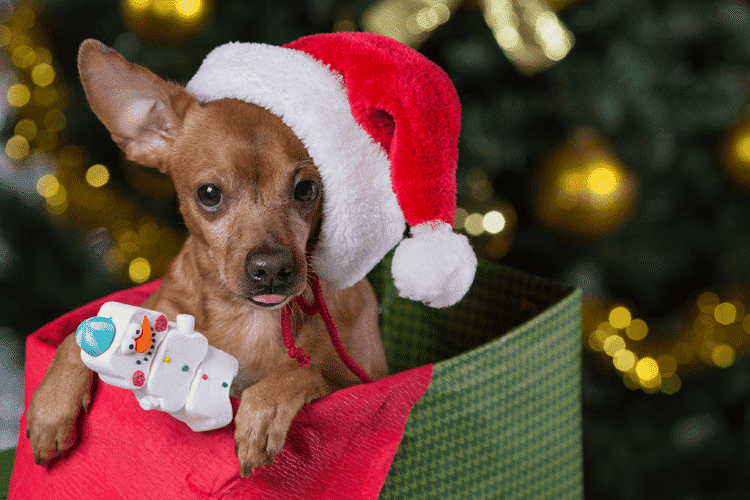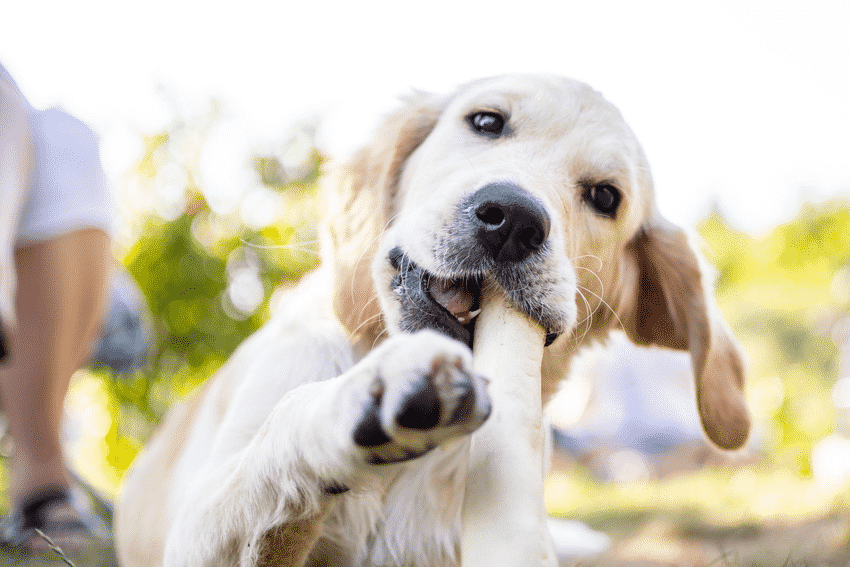Welcoming Your New Puppy Home – How To Prepare

So, your new puppy is coming home soon. This is an exciting and happy time, but it can also be a scary time. Your life is about to be upended. Are you ready? More importantly, is your home ready? Fear not, this blog will ease your apprehensions and prepare you to welcome your new puppy home and into the perfectly safe and healthy environment.
Make the First Vet Appointment for your New Puppy
This is the first thing you do when you commit to a puppy, even before he even comes home. New puppies should have a general health checkup and an immunization schedule set up. There will be a series of appointments, actually, but at least set up the first and let the doctor guide you the rest of the way.
Different breeds have different needs, so make sure you discuss what kinds of things to keep an eye out for, as well as how to prevent problems from occurring in the first place. For example, dogs with floppy ears are more prone to ear infections, so have a discussion with your vet about how to prevent them.
There are varying schools of thought as to how much immunization to give your puppy. Have an honest discussion about that. Cities like Chicago with rat problems can be a bigger risk for things like leptospirosis. Talk about that with your vet. Also talk about how soon and how often you should socialize your puppy with other dogs. Your puppy could be at risk before he has all of his shots.
Your doctor can also guide you on what to feed your puppy, how much to feed, and how to switch out foods if he won’t eat.
Puppy Food
Let’s talk about food some more. If you are not happy with your doctor’s recommendation and want to explore more options, your local pet store can help. Make sure you buy a puppy brand since puppies need a different nutrition profile than do older dogs. Don’t suffer from analysis paralysis here or become a brand snob. The best food for your dog is the one she eats regularly and maintains good health with, whether it’s $10 a bag or $100 a bag. First step in that process is finding one that she will actually eat. If you have to constantly spice up her food with tasty toppers, it’s probably the wrong brand.
Also make sure you have a good supply of dog treats to reward your puppy for potty training (and other puppy training) successes. In addition to pet store bought dog treats, did you know that many types of human food are OK for dogs? This includes, but is not limited to, carrots, peas, string cheese, Greek yogurt, applesauce, pumpkin, and peanut butter. You’ll probably want to do a quick web search if you are unsure about a human grade treat, because some foods can be downright bad for dogs – chocolate, avocado, onions, garlic, and grapes, to name a few.
Finally, to get your puppy on a good feeding schedule, don’t let him graze and pick at his food all day. Set the food and water down at feeding time and put it up after he eats. This will help to get him on a regular feeding schedule.
Crate Training
You’re going to need a crate on day one. If you’ve never had a dog before you might think keeping him locked in what amounts to a cage seems cruel and unusual. Resist the temptation to think this. The crate is your puppy’s safe space. He will be here at night to sleep, of course, but he’ll also spend most of his time here when he’s not directly interacting with you (out walking, playing, at training, etc).
The crate should be big enough so that he can stand up and turn around comfortably, but not so big that he can roam around freely. This is an important component of potty training your puppy. Puppies won’t soil the area where they sleep, so if the space is confined enough that he can’t roam very far you should be fine. If it’s too big, he may roam to the other end to do his business when the urge strikes.
Look for a crate with a moveable divider so that the space inside can grow with your puppy.
Puppy Proofing your Home
The crate is the first step to puppy-proofing your home, but he won’t spend all of his time in it. When he’s out he’s going to look for something to chew. Some things – shoes, socks, car keys, eyeglasses – can be put away or out of reach. Others cannot, like your furniture and walls.
You really shouldn’t leave your new puppy unattended, but life happens sometimes – you get a phone call, you run down to get your mail, maybe the little guy figures out how to break out of the crate, or the dog walker forgets to put him back in it. And then he’s out an on the loose and we know what will happen then — he’ll chew things. Anything. Everything. Corners of walls baseboards. Furniture legs. Pillows. Sofa cushions. You!
There are a few things you can do to prevent this.
Option 1: Spray a product like Bitter Apple everywhere he might chew. Bitter Apple is a non-toxic bitter tasting concoction that will prevent your dog from chewing something more than once. It works for a short period of time. And, do you really want your house covered in this stuff? Probably not.
Option 2: Never let her out of your sight. Easier said than done. As we discussed earlier, eventually something will come up and she’ll be on the loose.
Option 3: Tether your leashed puppy to a table or chair leg. This will get him out of his crate, but not allow him to roam freely. Of course, you never want to leave your puppy alone while tethered for safety reasons, but it can be a good option while you watch television or eat dinner.
There is also an Option 4 – chewing alternatives.
Chew Toys
Your puppy will need a variety of toys, but chew toys are the most important early on for the reasons mentioned above. They’ll not only protect your house and person from those razor-sharp teeth, they will keep her occupied and tire him out for one of her many naps throughout the day. You have plenty of options here.
Organic chew toys, like rawhide, bully sticks, bones, and antlers can be good options, but a couple of words of warning. First, some bones and antlers may be too hard for your puppy’s young teeth. In that case you’re probably better off with rawhide or bully sticks or something similar.
But these are not without peril, either. As they are chewed, they naturally get smaller. If they get too small, your puppy could swallow and choke on the nub. For this reason, NEVER LEAVE YOUR DOG ALONE WITH A CHEW STICK. When they get too small, throw them away. In fact, do that before they get too small and eliminate the risk altogether.
There is also a myriad of non-organic options available at your pet store. Prefer the ones made of hard rubber that don’t break or have small corners or pieces that fleck off. There are both solid and hollow chew toys, the latter providing an added bonus – space for treats! Jamming an oversized treat or dog biscuit inside of a hollow chew toy can keep your puppy occupied for quite a while. Another option is to fill the toy with something like peanut butter or soft dog food and freeze it. This is a great way to keep your dog occupied in his crate while you are busy or not at home.
Of course, whatever goes in your dog must eventually come out.
Potty Training
This will probably be your biggest challenge. A lot will depend on where you live. If you’re in a conventional home with a front and/or back yard, things will be considerably easier. If you live in an apartment or condo not on the first floor, you’ve got your work cut out for you.
The first thing you want to do is get on a schedule. Some experts recommend taking a new puppy outside to go every 2-3 hours. As you might have noticed, that can interfere with your sleep schedule. If possible, keep the crate on the first floor so the distance to the door is as short as possible. Also, at least early on, you will want to carry your puppy from the crate to outside. If you let him walk himself, he’s liable to stop and drop right there on the spot, which is exactly you are trying to avoid.
Once he does his business outside, praise him profusely and reward him with treats. But be prepared and don’t be too hard on yourself or your puppy if there are accidents. Spoiler alert: there will be accidents. When (not if) he has an accident, immediately pick him up and take him outside, but do not yell at him or shame him. A simple, friendly “Oops” is enough to send a gentle message. If/when he goes again outside immediately following an accident, double down on the treats and praise. This will help to reinforce the desired behavior.
Once you can trust your puppy outside of the crate a little more, but perhaps not completely, you may want to lay down piddle pads – soft, flat, diaper like pads – for accidents. A more permanent solution, one that works well in high rises in the middle of the night, are small turf systems that contain their own drainage system. They come with cleaning solutions to keep them sanitary and better (notice we didn’t say “fresh”) smelling, but eventually you’ll want to eliminate this and the pads and only let your puppy relieve himself outside. Review our puppy potty training blog for for a step-by-step guidance on this topic.
Summary – the joy of a new puppy
Getting a new puppy will change your life, mostly for the better. But it takes a serious commitment and investment of time, not to mention money. Make sure you are ready to make this commitment so your home can be a loving, safe, healthy, and most importantly, a permanent home for your puppy.
At K9U Chicago, we love and welcome puppies to our daycare and inside/outside dog park once they are cleared by the vet, contact us with any questions your new puppy.



